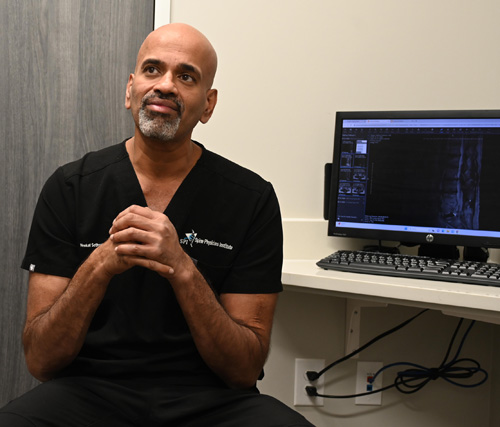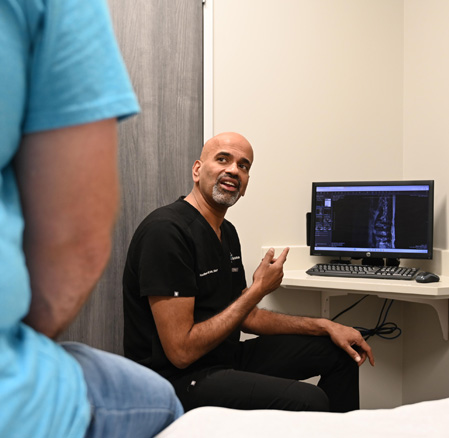What Is A Nerve Root Block And Why Is A Selective Nerve Root Block Helpful?

Nerve roots exit your spinal cord and form nerves that travel into your arms and legs. These nerves allow you to move your arms, chest wall and legs. Inflammation of these nerve roots may cause pain in your arms and legs. These nerve roots may become inflamed and painful due to irritation, for example, from a damaged disc or a bony spur.
A selective nerve root block provides important information to your physician and is not a primary treatment. It serves to prove which nerve is causing your pain by placing temporary numbing medicine over the nerve root of concern. If your main pain complaint improves after the injection then that nerve is most likely causing your pain. If your pain remains unchanged, that nerve probably is not the cause of your pain.
By confirming or denying your exact source of pain, it provides information allowing for proper treatment, which may include additional nerve blocks and/or surgery at a specific level.
What Will Happen To Me During The Procedure?
An IV will be started so that relaxation medication can be given. You will be placed on the x-ray table and positioned in such a way that your doctor can best visualize the bony openings in your spine where the nerve roots exit the spine using x-ray guidance. The skin will be scrubbed using 2 types of sterile scrub (soap). Next, the physician will numb a small area of skin with numbing medicine. This medicine stings for several seconds. After the numbing medicine has been given time to be effective, your doctor will direct a small needle using x-ray guidance near the specific nerve being tested. A small amount of contrast (dye) is then injected to insure proper needle position. This may increase your usual pain for about 30 seconds. Then, a small mixture of numbing medicine (anesthetic) and anti-inflammatory (cortisone/steriod) will be injected.

What Will Happen After The Procedure?
Immediately after the procedure, you will move around and try to imitate something that would normally bring about your usual pain. You will then report the percentage of pain relief and record the relief you experience during the next week on a post injection evaluation sheet (“pain diary”). This will be given to you when you are discharged home. PLEASE mail this completed “pain diary” to the doctor that is performing the procedure and their office will contact you.
You will NOT be able to drive the day of your procedure. On occasion, your arm, chest wall or leg may feel weak and numb for a few hours. If this happens, it usually does not last more than a few hours.
General Pre/Post Instructions
You should eat a light meal within a few hours of your procedure. If you are an insulin dependent diabetic, do not change your normal eating pattern prior to the procedure. Please take your routine medications (i.e. high blood pressure and diabetic medications). Do not take pain medications or anti-inflammatory medications the day of your procedure. You need to be hurting prior to this procedure. Please do not take any medications that may give you pain relief or lessen your usual pain. These medicines can be restarted after the procedure if they are needed. If you are on Coumadin (blood thinners) or Glucophage (a diabetic medicine) you must notify this office so the timing of these medications can be explained. You will be at one of the hospitals approximately 2-3 hours for your procedure, though you may only be with the doctor 20-30 minutes. YOU WILL NEED TO BRING A DRIVER WITH YOU. You may return to your normal activities the day after the procedure, including returning to work.

Spine Physicians Institute treats back pain, neck pain, herniated discs, stenosis and other spine problems. Patients come to the spine center from across the Dallas-Fort Worth metroplex. Dr. Sethuraman is one of few Mayo Clinic fellowship-trained spine surgeons in the North Texas area. A fellowship is the highest level of medical education in the U.S.
